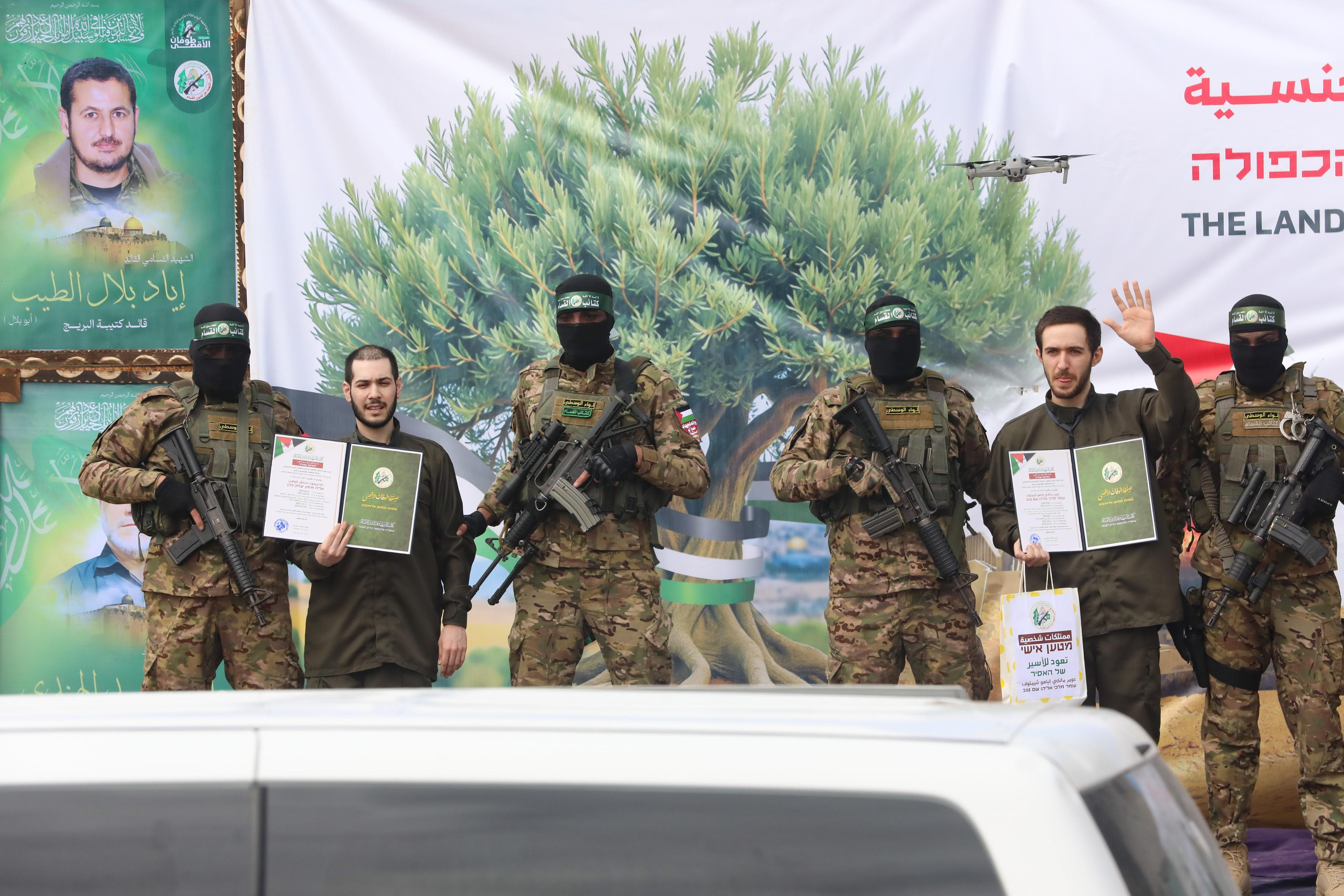Poking the bear
What game is Hamas really playing?
Israel has repeatedly warned them to stop with the humiliating 'ceremonies'. Even the despicable Red Cross has chimed in on this. Add to that the hideous Shiri Bibas fiasco and we really have to wonder: What is Hamas up to?

A month into a tenuous ceasefire between Israel and Hamas, the Palestinian militant group’s recent actions have sparked outrage and raised questions about its intentions. The handover of an unidentified body instead of Israeli hostage Shiri Bibas, alongside continued theatrical hostage "ceremonies," has intensified tensions, with Israeli leaders accusing Hamas of deliberately undermining the truce. As the first phase of the ceasefire nears its March 2 end, analysts and officials are debating whether Hamas is angling to provoke Israel into restarting the war—or simply struggling to maintain control.
The Shiri Bibas Fiasco
On February 20, Hamas staged a highly publicized handover in Khan Younis, southern Gaza, transferring four coffins to the Red Cross. The group claimed these contained the remains of Shiri Bibas, her sons Ariel (4) and Kfir (10 months when abducted), and Oded Lifshitz (83), all kidnapped from Kibbutz Nir Oz during the October 7, 2023, attack that killed 1,200 and saw 251 taken hostage. The event featured masked fighters, mock missiles, and posters blaming Israel and the U.S. for the deaths—drawing sharp rebukes from Israel and the Red Cross for its lack of dignity.
Forensic analysis confirmed the bodies of Ariel, Kfir, and Lifshitz, but the fourth was not Shiri Bibas. Instead, it was an unidentified Gazan woman, prompting Israeli Prime Minister Benjamin Netanyahu to call it an “unimaginably cynical move” and vow Hamas would “pay the full price.” The Israeli military labeled it a “violation of utmost severity,” demanding Shiri’s return. Hamas quickly corrected the error, handing over a body on February 21 that the Bibas family confirmed as Shiri’s the next day. The group claimed the mix-up stemmed from Israeli airstrikes blending remains in rubble, with spokesman Hazem Qassem telling Sky News Arabia it was an “unintentional mistake” under investigation.
A Pattern of Provocation?
The incident follows Hamas’s defiance of Israel’s warnings to halt humiliating handover ceremonies. Despite the January 19 ceasefire—brokered by the U.S., Qatar, and Egypt—requiring a dignified process, Hamas has persisted with staged events, complete with propaganda. Israel sees this as a deliberate taunt. Netanyahu’s government had threatened reprisals if the spectacles continued, yet Hamas doubled down, delivering the wrong body just days before a February 22 release of six living hostages, including Hisham al-Sayed and Eliya Cohen.
Some speculate Hamas aims to goad Israel into scrapping the truce. Posts on X suggest the timing—two days before the next swap—was strategic, tying Israel’s hands to prevent a military response. With 33 hostages freed for 1,900 Palestinian prisoners so far, Hamas may be dragging out releases to rebuild in Gaza, where over 48,000 have died, per the local health ministry. A breakdown could shift blame to Israel, especially with its far-right coalition, like Finance Minister Bezalel Smotrich, eager to resume fighting.
Strategic Goals or Internal Chaos?
Hamas’s actions might reflect a broader strategy. By stoking Israel’s anger, it could fracture the ceasefire, portraying Israel as the aggressor and regaining global sympathy. The Bibas family—Shiri, Yarden (freed February 1), and their redheaded sons—became symbols of the hostage crisis, amplifying the emotional stakes. Returning the wrong body, then correcting it under pressure, could be a calculated jab to exploit Israel’s domestic divide between hostage families and hardliners.
Yet, disorganization can’t be ruled out. Hamas paused releases on February 10, citing Israel’s aid restrictions, only resuming February 13 after mediator intervention. This suggests internal friction or logistical strain in Gaza’s chaos. The group’s claim of a forensic mix-up aligns with the war’s toll—mass graves and destroyed infrastructure complicate identification. Their swift correction and pledge to investigate indicate a desire to preserve the ceasefire, which has paused 15 months of fighting.
Ceasefire at a Crossroads
The truce’s first phase has seen eight exchanges, with Saturday’s release of six hostages proceeding despite Israel cancelling 620 Palestinian prisoner releases over the Bibas incident. Phase two talks, meant to address the remaining 59 hostages (nearly half confirmed dead) and a permanent end to hostilities, loom large. Hamas insists on Israel’s full withdrawal and its own survival, while Israel demands disarmament—goals that remain far apart.
Netanyahu’s threats and U.S. warnings of “total annihilation” if Hamas falters underscore the stakes. Hamas’s behavior—provocative yet compliant enough to keep talks alive—hints at a tightrope act: flexing defiance to rally support while banking on mediators to restrain Israel. Whether this is tactical brilliance or a stumble amid Gaza’s ruin, the ceasefire hangs in the balance.